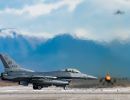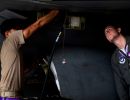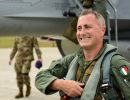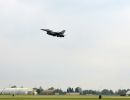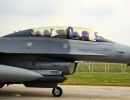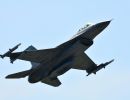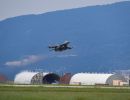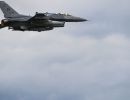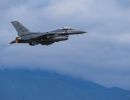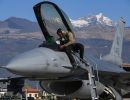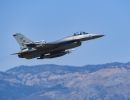The Air Force put out the word last summer that F-16s would have to start learning the role, and the 510th Fighter Squadron at Aviano is the first in Europe to start training. A group of pilots trained with the Italians last week in various search-and-rescue exercises at Rimini Air Base, about 380 miles southeast of Aviano. The squadron hopes to have 20 pilots trained by the summer.
In different exercises, U.S. Air Force jets pinpointed the "downed" Italian Air Force pilots, and helicopter pilots from Italy’s 83rd Squadron swooped in to bring them home.
"It was different working with [the F-16 pilots] but they did very well," said Italian Air Force Capt. Vittorio Carminato, who organized the exercise. "Normally, the A-10 pilots teach us what to do, but now we’re teaching the F-16 pilots."
Search and rescue still will be a primary mission of the A-10, but the Air Force has decided to branch out to other aircraft in case the need arises in real life and A-10s aren’t available.
"Back in the ’90s, the Air Force started cutting back on its A-10 units and missions, and the F-16s start doing some of those missions like forward air control and close air support," said Capt. Kenny Smith, one of the F-16 pilots training for the new mission.
There are some very real differences between the aircraft.
The F-16 is sleeker and has a sexier nickname — Fighting Falcon.
The A-10 lumbers and is called a Warthog.
The Fighting Falcon is fast. It travels up to 1,500 mph. The Warthog, well, it’s not called a Warthog for nothing — it travels up to 420 mph.
The fact that an A-10 can linger in an area and take more hits because of its titanium shell makes it ideal for this kind of mission. The F-16 doesn’t take a bullet quite as well.
"There are differences, and the A-10 is probably better suited for this," said Capt. Joe Javorski, another F-16 pilot participating in the training. "But the idea is to train as many people as possible in case an A-10 isn’t available."
"They can both do the missions," Smith said. "It’s just a matter of learning new tactics."
As a plus, Smith added, F-16s can fly high in the sky where they can’t be targeted by gunfire from the ground. Instead of flying in a straight line like an A-10 might do, F-16 pilots are learning to fly in a circular pattern to stay in one general area. The pilots can also slow down to about 350 mph, if necessary.
The pilots started the week with daytime missions and gradually moved to more difficult tasks, like picking up downed pilots in the middle of the night.
The pilots still regard the A-10 pilots as the pros in this line of work and have been quick to pick their brains.
"Absolutely," Javorski said. "They’re the experts. We can learn a lot from them."
The end goal, Smith said, is to get just as good.
"The bottom line is if there’s a guy down, we want to get him out of there," Smith said. "If I’m on the ground, I want the best coming out for me, because I don’t want to get caught and be taken to some POW camp."

























